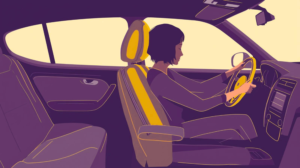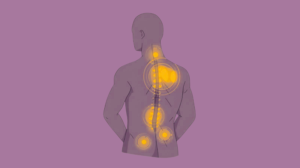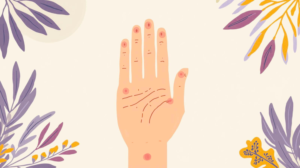Back pain is a prevalent health issue affecting people across all age groups and lifestyles. According to the Global Burden of Disease Study, low back pain is one of the leading causes of disability worldwide (Vos et al., 2020). Whether caused by poor posture, a sedentary lifestyle, injury, or medical conditions like herniated discs and arthritis, back pain can be debilitating. Fortunately, many effective recovery strategies can help reduce pain, restore mobility, and prevent recurrence.
This article outlines practical and science-backed recovery tips for back pain relief, from posture improvement to stretching, physical therapy, and ergonomics.
Understanding Back Pain
Back pain can be categorized as acute (lasting less than six weeks), subacute (six to twelve weeks), or chronic (lasting longer than twelve weeks). The pain may stem from muscles, ligaments, nerves, joints, or intervertebral discs.
Common causes include:
- Muscle or ligament strain
- Herniated or bulging discs
- Arthritis
- Osteoporosis
- Poor posture
- Sedentary lifestyle
- Occupational strain
Understanding the cause is the first step toward choosing the most effective recovery plan.
Tip 1: Maintain Good Posture
Posture plays a crucial role in spinal health. Slouching or hunching forward adds stress on the spine and surrounding muscles. Over time, poor posture can lead to chronic pain and structural imbalances.
How to improve posture:
- Keep your back straight and shoulders relaxed.
- When sitting, ensure your feet are flat on the floor and knees at hip level.
- Use a lumbar support pillow while sitting.
- Align your head over your shoulders rather than leaning forward.
Tip 2: Stay Active with Low-Impact Exercise
Physical activity is a cornerstone of back pain recovery. Prolonged rest may weaken the muscles that support your spine, worsening pain and delaying recovery.
Recommended low-impact exercises:
- Walking
- Swimming
- Stationary cycling
- Yoga or Pilates (under guidance)
Tip 3: Stretch and Strengthen Core Muscles
Weak core muscles can lead to poor spinal support. Gentle stretching and targeted core strengthening can reduce tension and prevent future injuries.
Core exercises for back pain relief:
- Pelvic tilts
- Cat-cow stretch
- Bird-dog
- Planks (with modifications)
- Bridge pose
Tip 4: Use Hot and Cold Therapy
Heat and cold packs are simple yet effective ways to manage acute back pain.
- Cold therapy helps reduce inflammation and numb sharp pain after an injury.
- Heat therapy relaxes tense muscles and improves blood flow for healing.
Tip 5: Practice Ergonomics at Work and Home
Poor ergonomics at workstations or during daily activities can contribute to or worsen back pain. Implementing ergonomic practices is essential for long-term relief.
Workstation tips:
- Adjust your chair to support your lower back.
- Keep your monitor at eye level to avoid neck strain.
- Use a footrest if your feet don’t touch the floor.
- Take breaks every 30–45 minutes to stand or stretch.
Tip 6: Maintain a Healthy Weight
Excess weight, especially around the abdomen, increases strain on the lower back and spinal discs. Weight loss can relieve this pressure and reduce pain intensity.
Ways to support healthy weight:
- Eat a balanced, nutrient-rich diet.
- Avoid processed foods and excess sugar.
- Engage in regular physical activity.
Tip 7: Sleep Right
Sleep posture significantly affects back pain. A poor sleeping position or inadequate mattress support can contribute to discomfort and stiffness.
Better sleep habits for back pain:
- Sleep on your back with a pillow under your knees.
- Side sleepers should place a pillow between the knees.
- Avoid sleeping on your stomach.
- Use a firm or medium-firm mattress with adequate support.
According to the National Institute of Neurological Disorders and Stroke (2020), adjusting sleep positions can help reduce strain and promote healing.
Tip 8: Avoid Prolonged Sitting or Standing
Remaining in one position for extended periods can increase pressure on the spine.
Tips to break sedentary behavior:
- Use a standing desk for part of your day.
- Set reminders to move every hour.
- Do light stretching or take short walks.
The WHO (2020) lists physical inactivity as a major contributor to musculoskeletal problems, including back pain. Movement is key to spinal health.
Tip 9: Manage Stress
Chronic stress can lead to muscle tension, which often manifests as back pain. Stress also amplifies the perception of pain.
Stress-reduction techniques:
- Deep breathing exercises
- Meditation and mindfulness
- Gentle yoga
- Journaling or creative hobbies
- Talking to a counselor or therapist
Studies show that cognitive behavioral therapy (CBT) and relaxation techniques can be effective in managing chronic back pain.
Tip 10: Seek Professional Help
If back pain persists despite self-care efforts, it’s important to consult healthcare professionals.
When to see a doctor:
- Pain lasts longer than six weeks
- Pain radiates down the legs
- Numbness or weakness in limbs
- Sudden, severe pain without known injury
- Difficulty controlling bowel or bladder function
Professionals who can help:
- Physiotherapists for guided exercises and manual therapy
- Chiropractors for spinal adjustments and posture correction
- Orthopedic specialists for diagnosis and treatment planning
- Pain management doctors for chronic pain interventions
The American Physical Therapy Association (2020) and the American Chiropractic Association (n.d.) both advocate for individualized treatment plans for effective relief.
Tip 11: Follow Safe Lifting Practices
Improper lifting is a common cause of acute back injuries. Learning and using proper lifting techniques can prevent strain.
Safe lifting guidelines:
- Bend at the hips and knees, not the waist
- Keep the object close to your body
- Engage your core while lifting
- Avoid twisting while carrying
According to the Canadian Centre for Occupational Health and Safety (2020), proper lifting is vital for preventing lower back injuries, especially in occupational settings.
Tip 12: Be Cautious with Medications
Over-the-counter medications like ibuprofen or acetaminophen can help manage short-term pain, but they should not be relied on for long-term relief.
Use medications responsibly:
- Consult a doctor before prolonged use
- Avoid opioids for chronic back pain due to addiction risk
- Explore non-drug pain management alternatives
Always follow your healthcare provider’s advice and avoid self-medicating.
Tip 13: Driving Ergonomics Matter
Long commutes and poor driving posture can worsen back pain. Make ergonomic adjustments to your vehicle to support your spine.
Driving posture tips:
- Sit with knees slightly higher than hips
- Adjust the seat to maintain contact with your back
- Use lumbar support or a rolled towel
- Take breaks during long drives
Conclusion
Recovering from back pain requires a multifaceted approach. From posture correction and regular exercise to ergonomic improvements and stress management, these tips support healing and prevent recurrence. While self-care can be effective for many, seeking professional guidance ensures tailored treatment and long-term relief.
Take proactive steps to protect your back health—your future self will thank you.
References
- Mayo Clinic. (n.d.). Posture: Tips to improve your posture. Mayo Clinic. https://www.mayoclinic.org/healthy-lifestyle/adult-health/in-depth/posture/art-20045171
- Vos, T., et al. (2020). Global burden of 369 diseases and injuries in 204 countries and territories, 1990–2019: A systematic analysis for the Global Burden of Disease Study 2019. The Lancet. https://www.ncbi.nlm.nih.gov/pmc/articles/PMC7151183/
- World Health Organization. (2020). Physical activity. https://www.who.int/news-room/fact-sheets/detail/physical-activity
- American Chiropractic Association. (n.d.). Posture and back health. https://www.acatoday.org/Patients/Health-Wellness-Information/Posture
- National Institutes of Health. (2020). Posture and musculoskeletal health. https://www.ninds.nih.gov/Disorders/All-Disorders/Back-Pain-Information-Page
- Harvard Health Publishing. (2019). Why good posture matters. Harvard Medical School. https://www.health.harvard.edu/pain/why-good-posture-matters
- Cleveland Clinic. (2021). Poor posture: How it affects your health. https://health.clevelandclinic.org/the-dangers-of-poor-posture
- National Institute of Neurological Disorders and Stroke. (2020). Low back pain fact sheet. https://www.ninds.nih.gov/Disorders/Patient-Caregiver-Education/Fact-Sheets/Low-Back-Pain-Fact-Sheet
- World Health Organization. (2019). Musculoskeletal conditions. https://www.who.int/news-room/fact-sheets/detail/musculoskeletal-conditions
- Mayo Clinic. (2021). Preventing back pain. https://www.mayoclinic.org/diseases-conditions/back-pain/in-depth/back-pain/art-20044507
- National Institute for Occupational Safety and Health. (2020). Ergonomics and musculoskeletal disorders. https://www.cdc.gov/niosh/topics/ergonomics/
- World Health Organization. (2020). Physical inactivity: A global public health problem. https://www.who.int/dietphysicalactivity/factsheet_inactivity/en/
- Centers for Disease Control and Prevention. (2021). How much physical activity do adults need? https://www.cdc.gov/physicalactivity/basics/adults/index.htm
- American Physical Therapy Association. (2020). Posture and movement. https://www.choosept.com/guide/physical-therapy-guide-posture
- National Highway Traffic Safety Administration. (2021). Ergonomics while driving. https://www.nhtsa.gov/road-safety
- American Academy of Orthopaedic Surgeons. (2020). Driving posture tips. https://orthoinfo.aaos.org/en/staying-healthy/healthy-driving-posture
- Canadian Centre for Occupational Health and Safety. (2020). Safe lifting practices. https://www.ccohs.ca/oshanswers/ergonomics/liftingsafely.html
- Occupational Safety and Health Administration. (2020). Ergonomics: Solutions to control hazards. https://www.osha.gov/ergonomics
- National Institute of Arthritis and Musculoskeletal and Skin Diseases. (2020). Joint pain. https://www.niams.nih.gov/health-topics/joint-pain
- Mayo Clinic. (2021). Office ergonomics: Your how-to guide. https://www.mayoclinic.org/healthy-lifestyle/adult-health/in-depth/office-ergonomics/art-20046169























